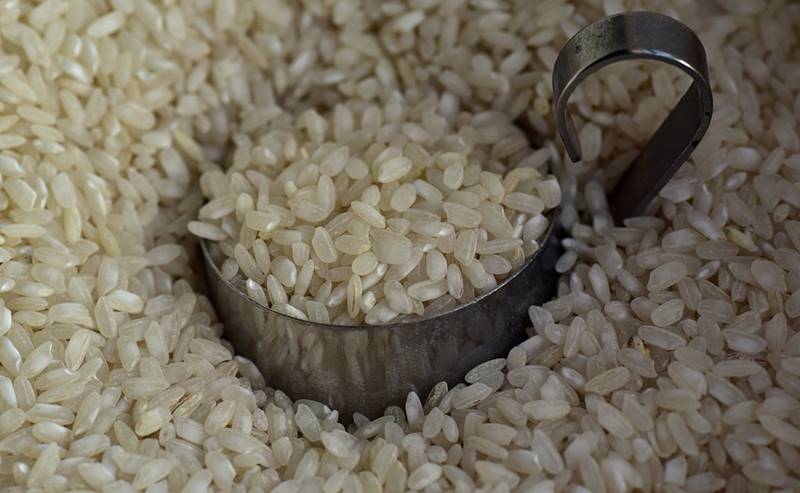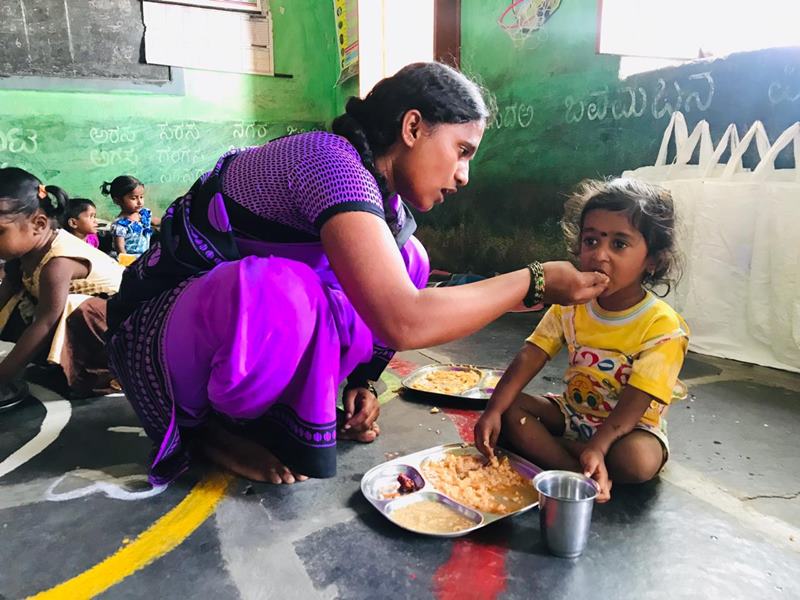To fortify or not to fortify rice is the question nutrition and health experts on either side explain
The Indian government has decided to provide fortified rice to the underprivileged beneficiaries in order to address nutritional deficiencies. While some nutrition experts consider it to be a boon, others dismiss it as ‘wasteful’ and ‘ineffective’.


Fortified rice could be a micronutrient-rich alternative which fits Indian diet preferences, say some experts. Photo: Pixabay
Food fortification has become another cause for debate. In a bid to address malnutrition and anaemia in the country, the Indian government has decided to provide rice fortified with iron under various welfare schemes including the public distribution system and mid-day meal schemes from 2024.
Although the government has long been championing the idea of ‘mandatory’ food fortification, many nutrition and public health experts disagree on this.
The government claims, fortifying rice with iron is a significant public health response to address anaemia and malnutrition in the country. Some nutrition experts are backing these claims.
“Large-scale food fortification interventions have the ability to improve functional health outcomes and nutritional status of populations across India,” Sheila C Vir, director of Public Health Nutrition and Development Centre, a Delhi-based non-government company, said in a press statement dated October 28.
Also Read: Food fortification, the new panacea for nutritional deficiency

Why does India need fortified food?
The phase-I data of National Family Health Survey (NFHS-5), 2019-20, shows that the prevalence of anaemia among children under five years of age has increased in 18 out of 22 states and Union Territories in the country. A similar trend was seen in the prevalence of anaemia among women in the age group 15-49 years where 16 out of the 22 states/UTs, reported an increase in anaemia among them. From 49.7 per cent in NFHS-4 the prevalence of anaemia in women in the age group 15-49 years has risen to 57.2 per cent in NFHS-5 (phase 1).
The leading cause of anaemia is iron deficiency, worsened by other nutritional deficiencies, especially Folic Acid, vitamin B6, and vitamin B12. Therefore, food fortification, some experts say, is ‘absolutely necessary’ to fight anaemia and other serious implications of micronutrient deficiencies.
Also Read: What is the cost of childhood wasting and severe acute malnutrition in India?
“Ignoring the serious implications of micronutrient deficiencies and failing to incorporate essential micronutrients in everyday diets can have irreversible consequences for not only physical health but mental development,” said Vir, senior nutrition specialist.
“Studies show that micronutrient deficiency is not just closely linked with poor immunity and congenital disorders such as neural tube defects (NTDs), but also cognitive development, school concentration capacities and work output,” she added.
The experts are of the opinion that fortified rice kernels that resemble milled rice in appearance, taste, and texture are blended with non-fortified rice at a ratio of 1:100. This could be a micronutrient-rich alternative which fits Indian diet preferences.

“A case-controlled study, conducted in 2019 in Gujarat, found that integrating micronutrient fortified rice into the midday meal programmes over eight months significantly reduced anaemia prevalence by 10 per cent and improved cognitive score by 11.3 points among 6-12-year-old school students,” said R Sankar, director of the Indian Nutrition Initiative, a flagship programme of the Tata Trusts.
“The evidence widely available from India and Global data including WHO [World Health Organization] suggests that food fortification is an effective preventive strategy and helps to increase micronutrient intake,” added Shankar.
Food fortification — a bane or boon?
However, several health and nutrition experts oppose the government’s decision of mandatory food fortification. They claim that the chemical or synthetic fortification of rice with iron is ‘detrimental’ to health and is ‘wasteful’ and ‘ineffective’.
In a virtual discussion titled ‘Mandatory food fortification: Boon or bane?’ organised on August 28, several health and nutrition experts discussed key health related concerns with mandatory fortification, its economic impact and conflict of interest around it, and suggested solutions to address the malnutrition crisis in the country. The discussion was organised by Alliance for Sustainable and Holistic Agriculture (ASHA), an informal network working to strengthen food diversity and nutrition.
“We cannot afford to walk into a trap laid out by the corporate. Iron is not the only cause of anaemia. What we are made to believe is that iron is going to do the magic. Haemoglobin is not just formed by iron. Haemoglobin is a complex molecule that requires protein and copper, and magnesium, Vitamin C,” Veena Shatrugna, former deputy director, National Institute of Nutrition, pointed out.
“The iron absorption in the Indian diet is a huge problem. It is just five per cent. We can improve absorption by adding animal protein with the diet and organ meat. Even if you keep eating like cows (green diet) the iron will not be absorbed. It is futile to push iron into our bodies without all the additional support system that the body requires to manufacture haemoglobin,” she added.
Also Read: Is mandatory food fortification a boon or bane?
‘Food diversity cannot be replaced by fortified food’
The experts opposing the decision also pointed out that the actual solution is to improve diets and food diversity such as inclusion of nutritious vegetables, millets, animal protein, and dairy products in the diet.
“To maintain a diverse diet is hugely important to health and to nutrition. It cannot be replaced by providing fortified foods. If you need iron, you also need protein and other micronutrients. Good quality diverse food provides that,” said Vandana Prasad, Noida-based public health expert and paediatrician.
“If we speak about poor households, the degree of lack of food diversity is absolutely dismal and critical in this country. Even seventy five years after Independence, people are not getting decent food. The government is stressing on providing fortified rice. It is suggesting to keep dumping one nutrient after another. Is that how haemoglobin goes up,” asked Prasad.
“This is a complete travesty of social justice and rights to food and nutrition,” she added. Prasad also suggested inclusion of millets and eggs in the diet of beneficiaries.
Meanwhile, the experts supporting the food fortification pointed out that there are 80 countries with legislation supporting the fortification of cereal flour, over 130 countries practise salt iodisation, and 13 countries mandate rice fortification. For several decades, low to middle-income countries (LMIC) have been strengthening the nutritional status of children through fortification in order to prevent micronutrient malnutrition diseases.
Amid this controversy, the Indian government continues to be firm about its decision. Recently, on August 15, Prime Minister Narendra Modi announced that be it the rice at the ration shop, the rice provided to children as part of the mid-day meals, or rice available through every scheme, will be fortified by the year 2024.
Also Read: Stop compulsory food fortification: Health activists write to FSSAI

